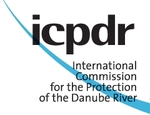Joint Danube Survey 2
 Countries: Germany, Austria, Czech Republic, Slovak Republic, Hungary, Croatia, Serbia, Bulgaria, Romania, Moldova, Ukraine
Countries: Germany, Austria, Czech Republic, Slovak Republic, Hungary, Croatia, Serbia, Bulgaria, Romania, Moldova, Ukraine
Client/Funding: International Commission for the Protection of the Danube River (ICPDR)
Duration: 1 February 2007 – 30 September 2008
 To get a better overview of water quality (be it an occurrence of specific dangerous substances or an in-depth characterization of river biology), a complementary monitoring activity has been established in the Danube River Basin. This has been organised in the form of scientific longitudinal surveys on the whole stretch of the river. The first Joint Danube Survey (JDS1) was carried out in 2001 and its results were a key information source for characterization of the Danube River Basin District as required by the EU WFD. Having recognised the success of the JDS1, the Danube Declaration expressed the need to organise a second Joint Danube Survey. In line with the ICPDR monitoring strategy and to continue the success of the first survey, the second Joint Danube Survey was organised.
To get a better overview of water quality (be it an occurrence of specific dangerous substances or an in-depth characterization of river biology), a complementary monitoring activity has been established in the Danube River Basin. This has been organised in the form of scientific longitudinal surveys on the whole stretch of the river. The first Joint Danube Survey (JDS1) was carried out in 2001 and its results were a key information source for characterization of the Danube River Basin District as required by the EU WFD. Having recognised the success of the JDS1, the Danube Declaration expressed the need to organise a second Joint Danube Survey. In line with the ICPDR monitoring strategy and to continue the success of the first survey, the second Joint Danube Survey was organised.
The overall objective of the second Joint Danube Survey (JDS2) was to undertake an international longitudinal ship survey that would produce comparable and reliable information on water quality for the entire length of the Danube River (including the major tributaries) on a short-term basis. It was envisaged that the outcomes of the JDS2 should include information needs arising from the implementation of the EU WFD.
The survey also served as a basis for the inter-calibration of biological monitoring methods among the ICPDR countries. The hydromorphological and climate change-related parameters, including radiological measurements of isotopes describing surface-ground water interactions were observed on-line. Nine press conferences in nine Danube countries were organised within the survey to increase public awareness on the Danube pollution issues and national teams of experts were trained on the use of the state-of-the-art sampling technologies.
JDS 2 was the biggest river expedition in the world, as three boats sailed from Regensburg (Germany) down to the Black Sea. Overall, 96 sites on the Danube River and 28 on its major tributaries were sampled by the three JDS 2 boats which travelled through 10 countries to the Danube Delta in Romania and Ukraine. The survey’s substantial part was the characterization of the ecological and chemical status of the Danube river and its major tributaries, including the Danube Delta, as required by the EU WFD. Its main goal was to produce highly comparable and reliable information on water quality and pollution. This will help Danube governments to implement the `Danube River Protection Convention and to meet the `EU WFD. The Directive's goal is to ensure that rivers and lakes have "good chemical and ecological status" by 2015. Environmental Institute was selected as the leading organisation to support the preparation, organization and evaluation of the Joint Danube Survey 2.
Services provided by Environmental Institute:
- Producing a homogenous data set for the Danube River based on a single sampling procedure and laboratory analysis of specified determine ands and biological quality elements;
- Screening of WFD priority pollutants and other relevant hazardous substances;
- General overview of the habitat morphology of the Danube River;
- Providing a forum for riparian/river basin country participation/training for sampling and intercomparison exercises;
- Comparing the results of JDS2 with the outcomes of JDS1;
- Assessment and confirmation of the pressures and impacts;
- Biological validation of the Danube typology;
- Supporting ecological and chemical assessment of the Danube River in line with the WFD;
- Contribution to the Danube Intercalibration Exercise;
- Microbiological analysis; analysis of radioisotopes;
- Integration of the web-based chemical, biological, hydromorphological, radiological and ecotoxicological modules of the database;
- Construction of information and data management system consisting of the rapid data collection, archiving, processing and reporting at the web-based database of the ICPDR;
- Evaluation of results, identification of hot-spots, final report;
- Promoting public awareness.
For more information http://www.icpdr.org/jds/
